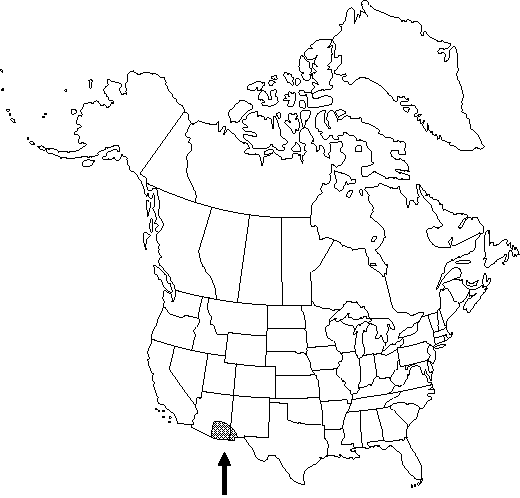Shrubs, evergreen, 0.3-2 m. Stems ± monomorphic, seldom with short axillary shoots. Bark of 2d-year stems purple or brown, glabrous. Bud scales 2-6 mm, deciduous. Spines absent. Leaves 5-9-foliolate; petioles 1-5 cm. Leaflet blades thick and rigid; surfaces abaxially dull, papillose, adaxially glossy, green; terminal leaflet stalked, blade 2.6-6.6 × 1.7-4.4 cm, 1-2.5 times as long as wide; lateral leaflet blades oblong to ovate or elliptic, 1-3-veined from base, base obtuse to rounded or truncate, margins plane to crispate, toothed, each with 3-5 teeth 1-5 mm tipped with spines to 1.2-3.8 × 0.2-0.6 mm, apex acute to rounded. Inflorescences racemose, dense, 30-50-flowered, 2-7 cm; bracteoles membranous, apex rounded or obtuse. Flowers: anther filaments with distal pair of recurved lateral teeth. Berries blue, glaucous, oblong-ovoid, 6-11 mm, juicy, solid.
Phenology: Flowering spring (Apr–May).
Habitat: Slopes and canyons
Elevation: 1500-2500 m
Distribution

Ariz., N.Mex., Mexico (Sonora).
Discussion
Berberis wilcoxii has not been tested for resistance to infection by Puccinia graminis.
Selected References
None.